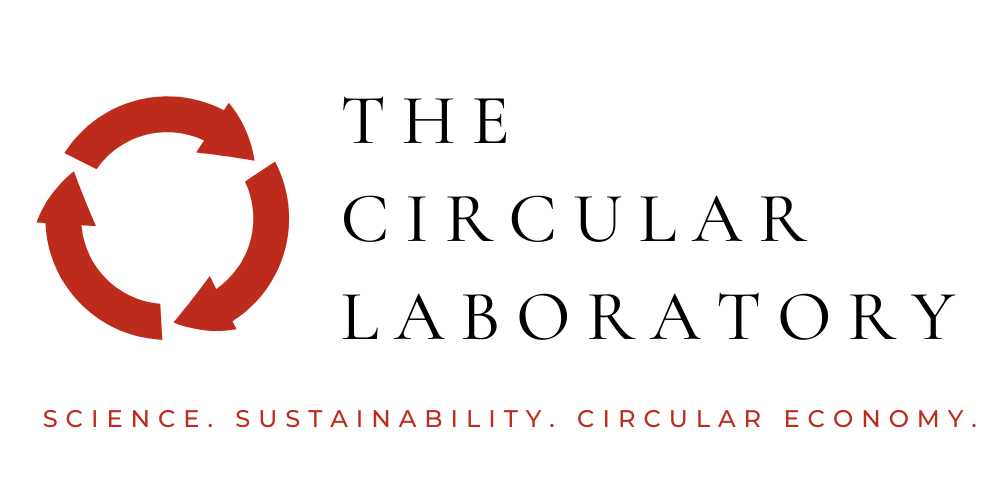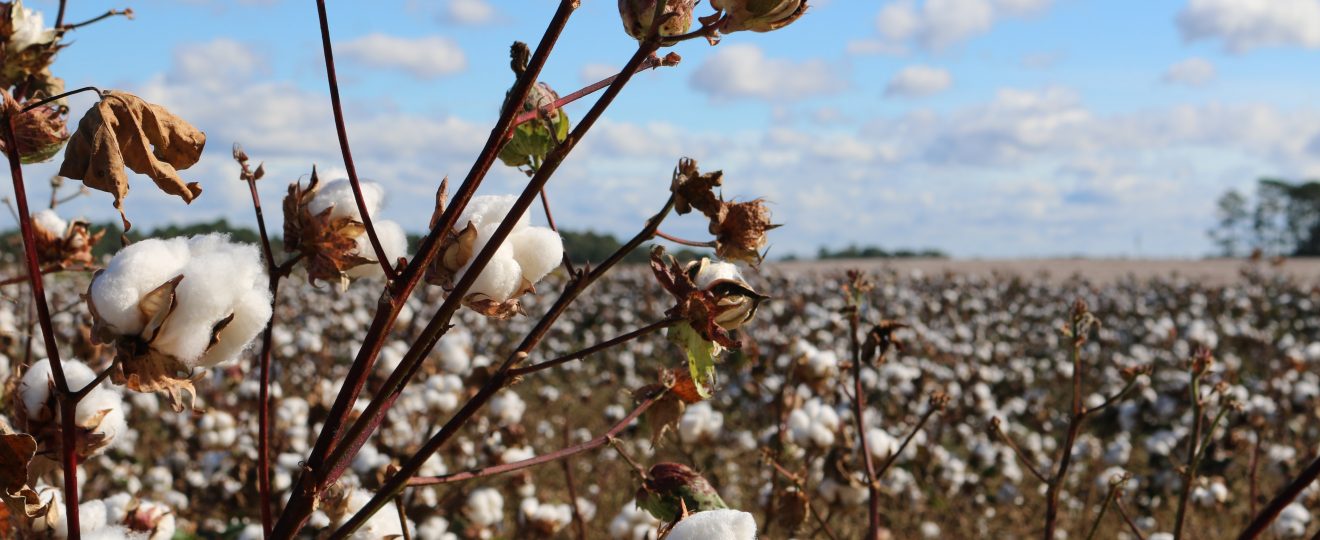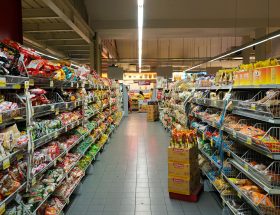By Paula Lorenz
Cotton has long been one of the most important fibres in the textile industry. Accounting for roughly 25 per cent of the global fibre production it ranks second right after polyester in terms of market share. People have been using cotton for thousands of years and the earliest known archaeological findings of (wild) cotton are estimated to date back 6,500 to 8,000 years.
It’s characteristics have made cotton a firm favourite with consumers: it is a natural fibre, it absorbs sweat very effectively and it is breathable – making it ideal for warm climates and sport. Many people also prefer the haptic feel of cotton on their skin, which is why socks and underwear are often made with cotton.
Cotton is a natural fibre, mostly consisting of cellulose (the material that makes up the cell wall in plants). It hails from different types of the Gossypium plant, where it’s prime function is the far disperion of the plant’s seeds. Botanically, it is part of the wider Malvaceae family, to which also cacao belongs.
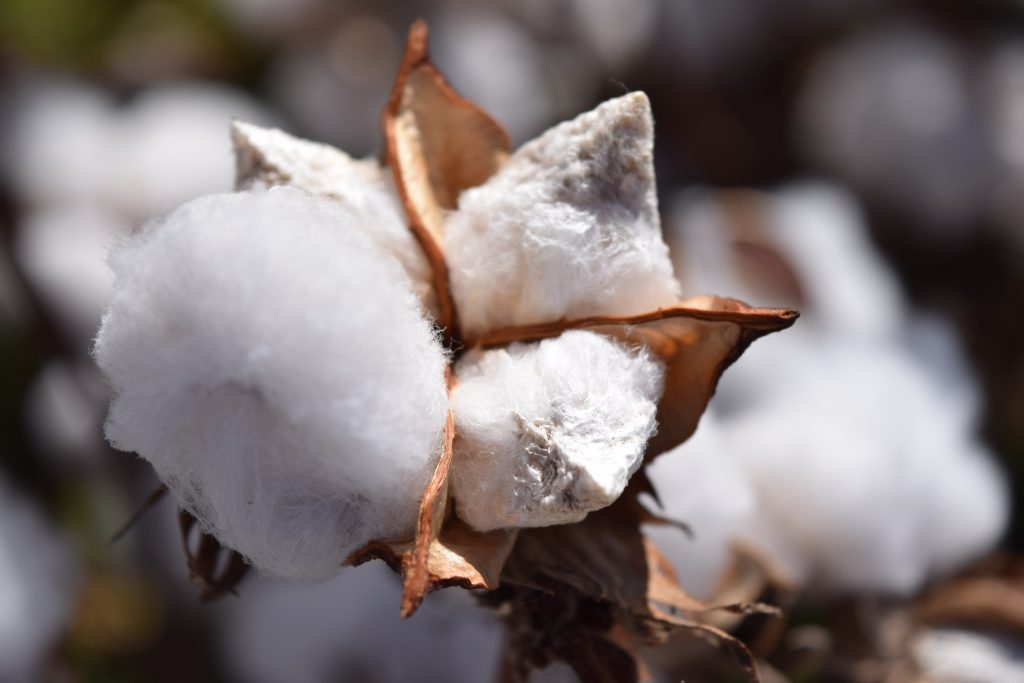
Cotton in the Spotlight
With sustainability awareness continuously gaining more momentum, consumers have become increasingly critical of the second most popular textile material. Cotton has long been criticised for its impact on the environment, as it requires enormous amounts of water to grow, which has devastating impacts for the landscapes and habitats this water is taken from.
Take the Aral Sea for example – once the fourth biggest sea in the world: it’s tragic near-disappearance has been well documented and is described by the UN Secretary-General as ‘probably [the] biggest ecological catastrophe of our time‘. Already in 1990 the BBC has warned about the crisis of the Aral Sea in what they called ‘the world’s worst disaster‘. The main reason is the intense cotton production in Kazakhstan and Uzbekistan, for which water has been diverted from its main tributaries, Syr Darya and Amu Darya.
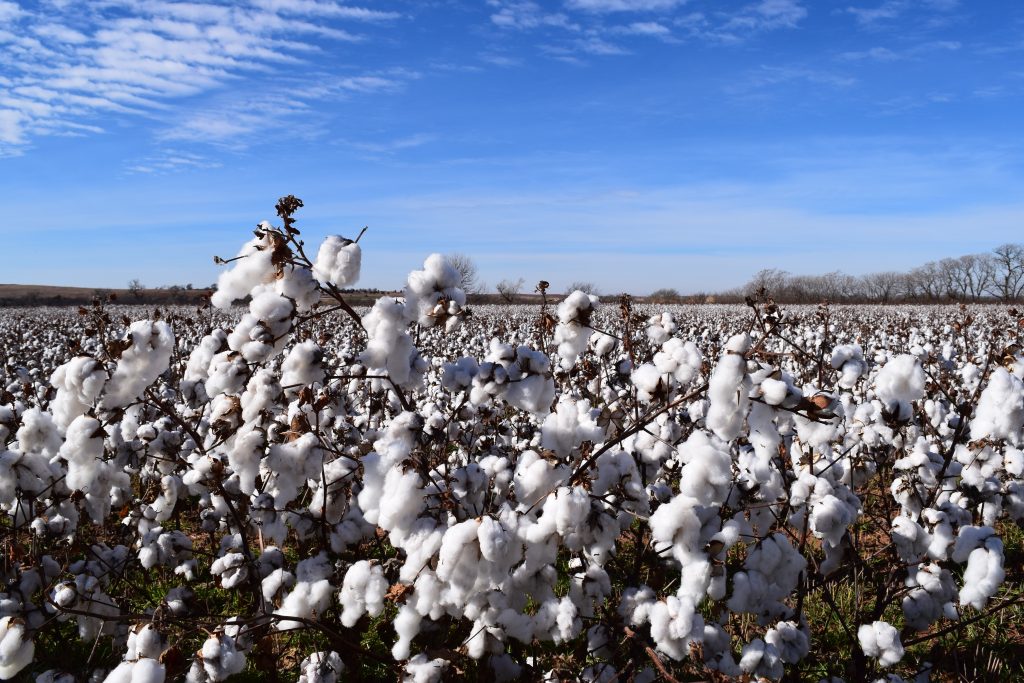
On the other side, the textile industry has been challenged by an increasing global demand for textile fibres, including cotton. Cotton production is a highly resource intensive process. Not only does it require a large amount of water to grow – normally between 10,000 and 20,000 liters are used to produce one kilogram of cotton – but it also needs vast areas of farmland and pesticides are often utilised that pollute the environment in the region and can cause severe health impacts. With a rising global population this contributes to a growing scarcity of clean drinking water and farmland to grow food, especially in underdeveloped countries with high populations. In India for example, water scarcity is already severe and the amount of water used for cotton production in 2013 could have supplied 85% of its population with 100 liters of water every day for a year. So besides the ethical aspects this raises the question of what happens with the growing demand for cotton, when the resources for its production come to a breaking point.
Cotton’s Conundrum
The textile industry is investing heavily into research into cotton recycling. But what many people are not aware of is the fact that cotton has no place in a circular economy, at least not infinitely. But why is that?
To understand this conundrum we have to delve into what happens when you recycle cotton.
First of all, there are generally two different ways cotton can be recycled – one is through mechanical recycling and the other one is chemical recycling. During mechanical recycling, used textiles get shredded up in order to produce yarn again. The problem with this is that the cotton fibres get damaged during this process – they will shorten with every iteration. This continually lowers the quality of the cotton fibres and ultimately they will be too damaged to use. This process can be slowed down by mixing shorter and longer cotton fibres, but if you stopped (or significantly reduced) the production of new virgin cotton in favour of a closed loop circular economy you will ultimately end up with fibres that are too short to use anymore. And that will be the end of cotton in textiles.
This big disadvantage of mechanical textile recycling is the reason why chemical textile recycling is best positioned as the means to recycle all textiles in a circular economy. Chemical textile recycling technologies are able to create fibres with the same quality as new fibres, ready to be used again. This makes these technologies indispensable in a circular economy.
But here is the catch: they can’t recycle cotton into cotton.

Why You Can’t Recycle Cotton Into Cotton
This must be one of the biggest surprises: when the input is cotton, the output is not cotton.
As previously mentioned, on a chemical level cotton mainly consists of cellulose. So when we’re talking about recycling cotton, we’re technically talking about recycling cellulose. Cellulose is a biopolymer, which is basically a long chain of glucose molecules that are linked together. Many of these chains are bundled up and that’s what ultimately creates the actual fibre that we can see. So when we’re recycling cotton, the cellulose is dissolved in a solvent which produces a thick, sticky solution and this is then pushed under high pressure through tiny holes to produce new fibres.
I have actually made a film about this in the past, so if you are interested to see how a fibre spinning process looks like, you can see one here on Youtube. I filmed this particular segment at Aalto University in Finland and the scientist leading through the process is Simone Haslinger.
When you chemically recycle cotton the output is a type of Rayon
There are quite a few technologies out there that can already transform cellulose on a large scale into fibres through a chemical process (albeit most of them are using wood pulp, but the mechanism is the same). They all use cellulose as input, but the output is always what is called Rayon. Rayons are man-made cellulosic fibres. The most famous example of rayon is probably viscose, which intuitively may not feel like an organic fibre, but it is one. Another popular rayon is lyocell, which is also commonly known by the brand name Tencel, and there are also a handful of lesser known rayons. They each differ from one another due to the different chemical processes they undergo.
The reason why the outcome of all of these chemical processes is not cotton, is that they result in a fibre with a different physical structure to cotton. They still consist of cellulose, but their properties change. Natural cellulose has the specific structure and characteristics of a natural material, while rayons are man-made fibres that have undergone some physical alterations in their specific chemical processes. A more simple way to think about this is that a chemical process simply cannot fully replicate the natural workings of a plant.
Towards a Circular Economy
For the reasons named, cotton does not have a place in a closed loop circular economy. Mechanical recycling cannot maintain its quality in the long run and chemical recycling turns it into a different fibre. But the value of the fibres can be maintained, as the cellulose itself can be recycled. And this maintaining of the value of resources is the very spirit of a circular economy.
Unless companies come to terms with using rayons instead of cotton, new virgin cotton will have to continue being produced. So in order to pave the way towards a circular economy, textile companies need to rethink the composition of their textiles. A gradual switch from cotton to rayons will enable people to continue wearing natural fibres in a closed loop circular economy. This is the way forward to make circular fashion a reality.
